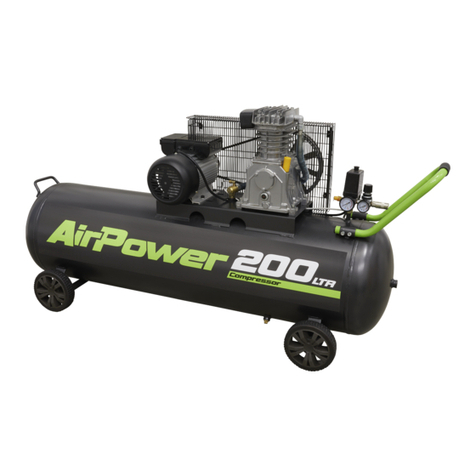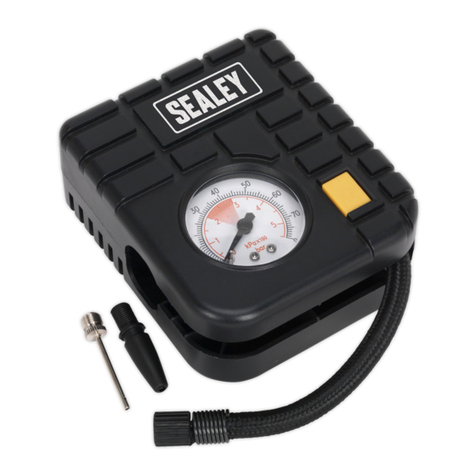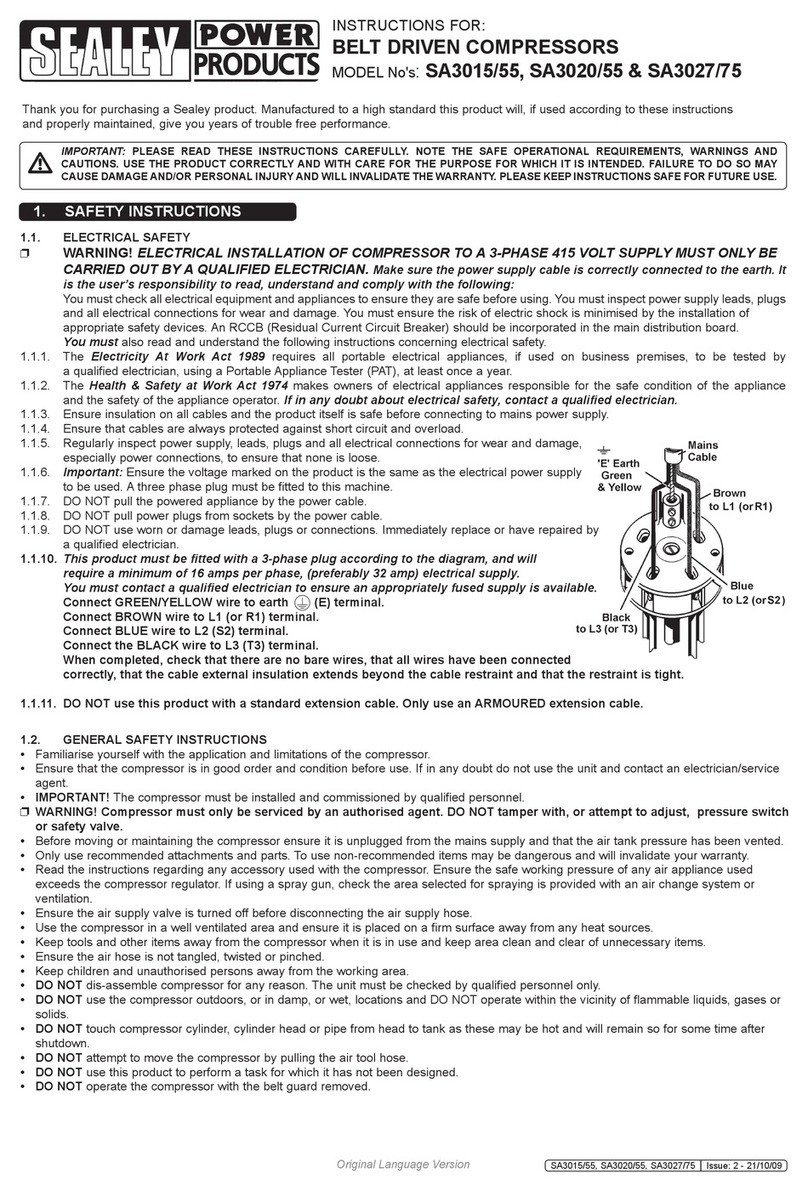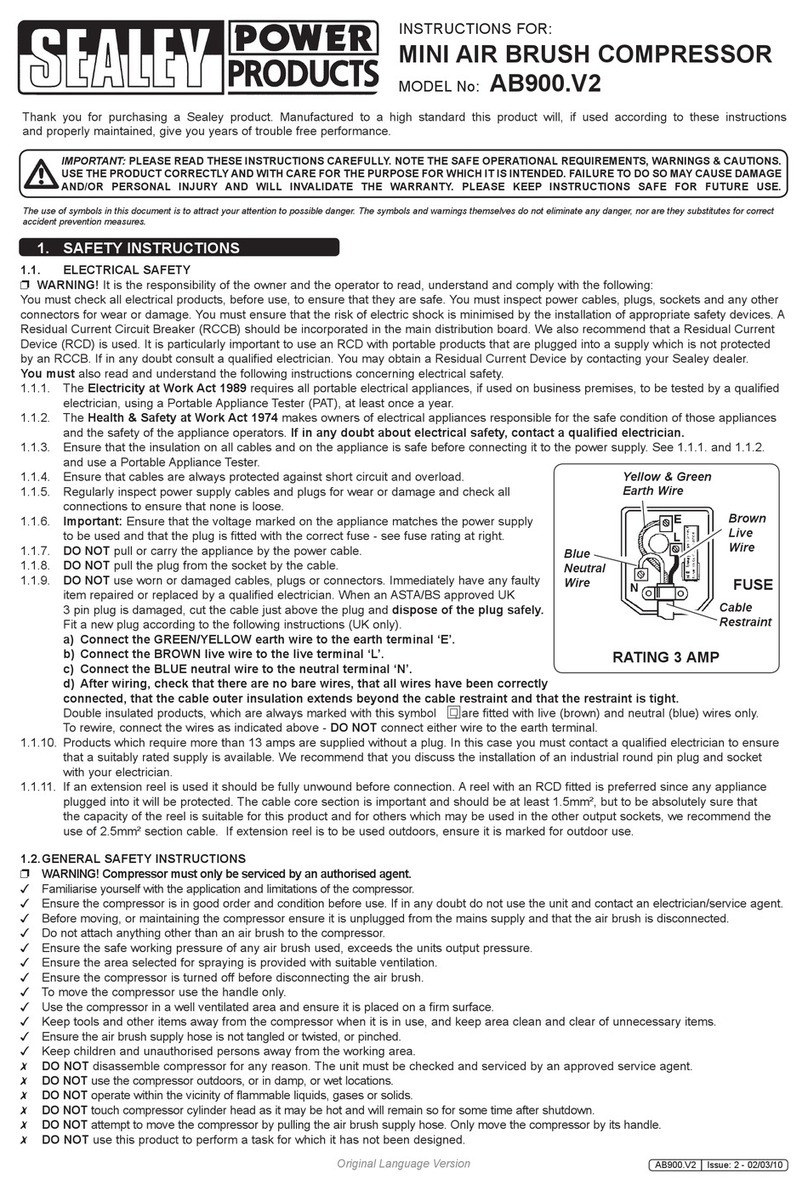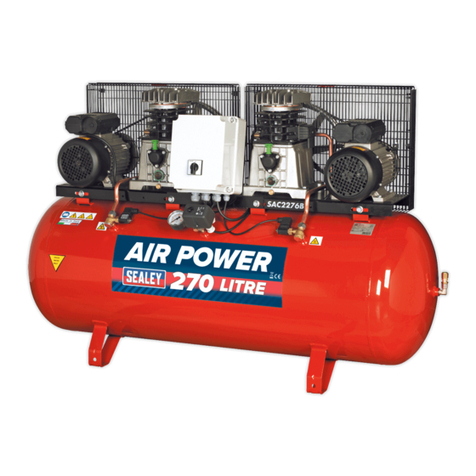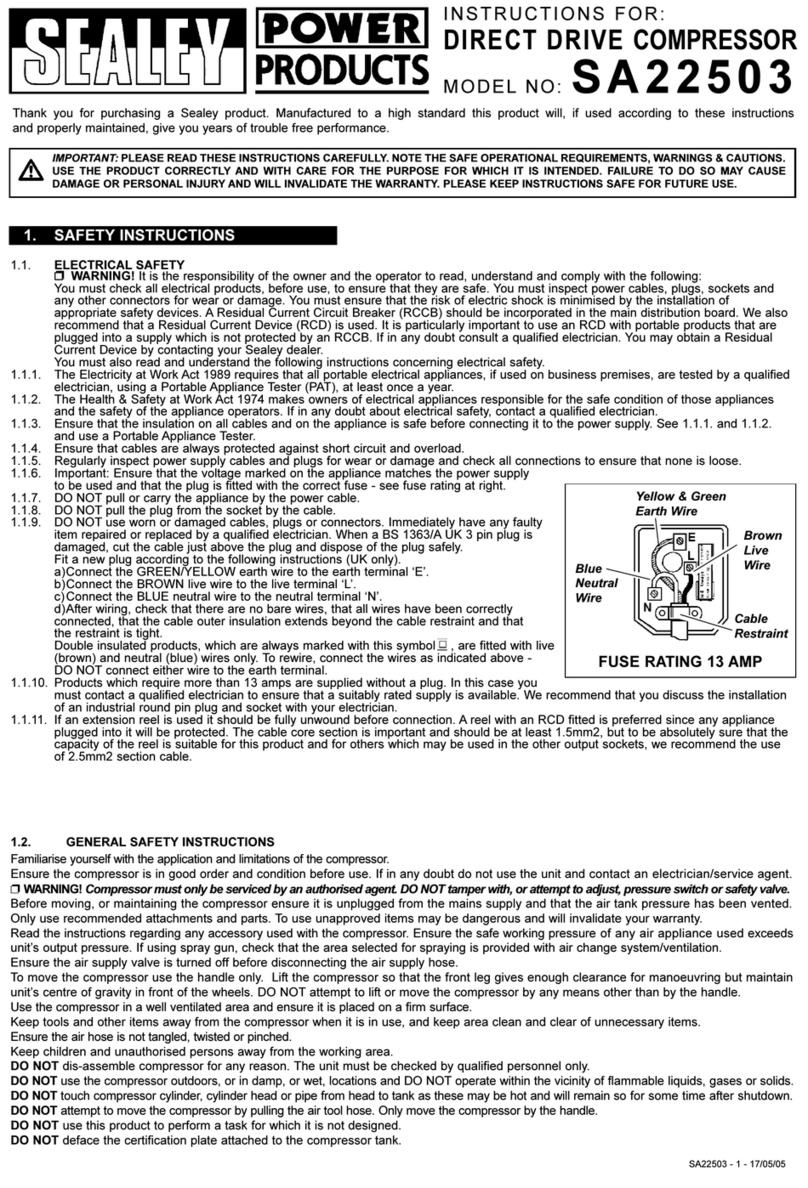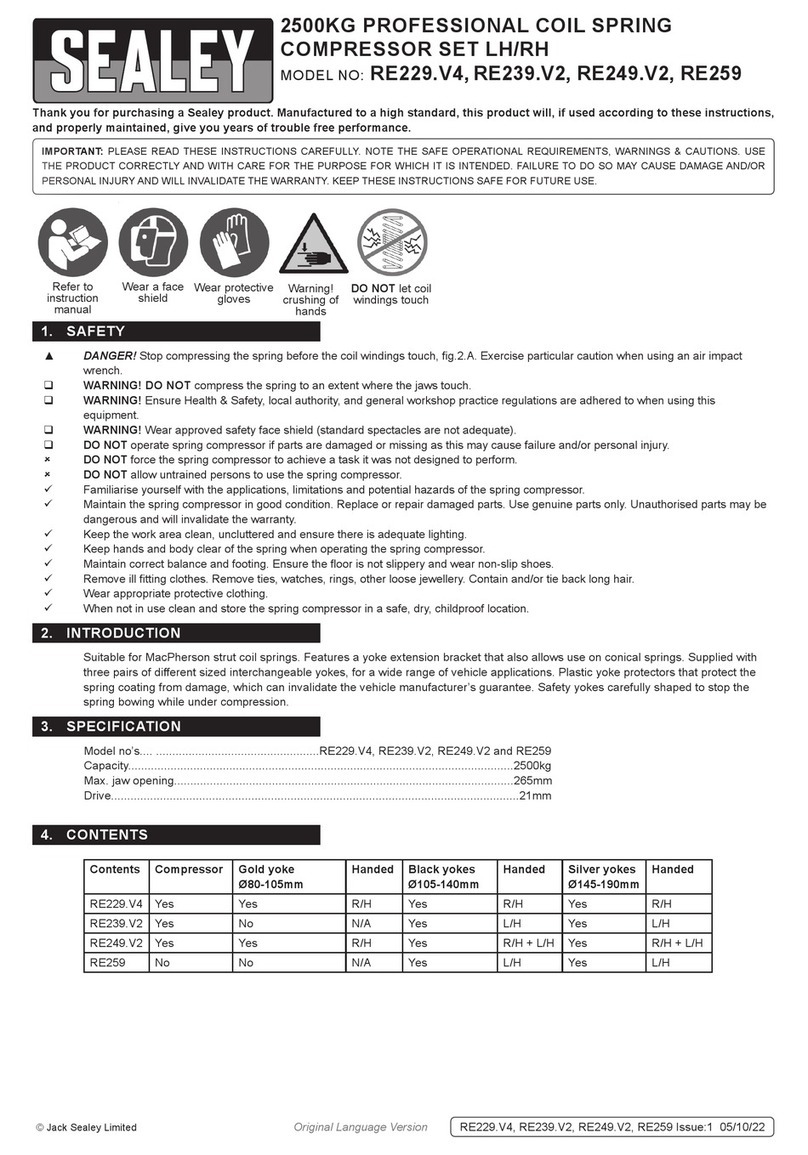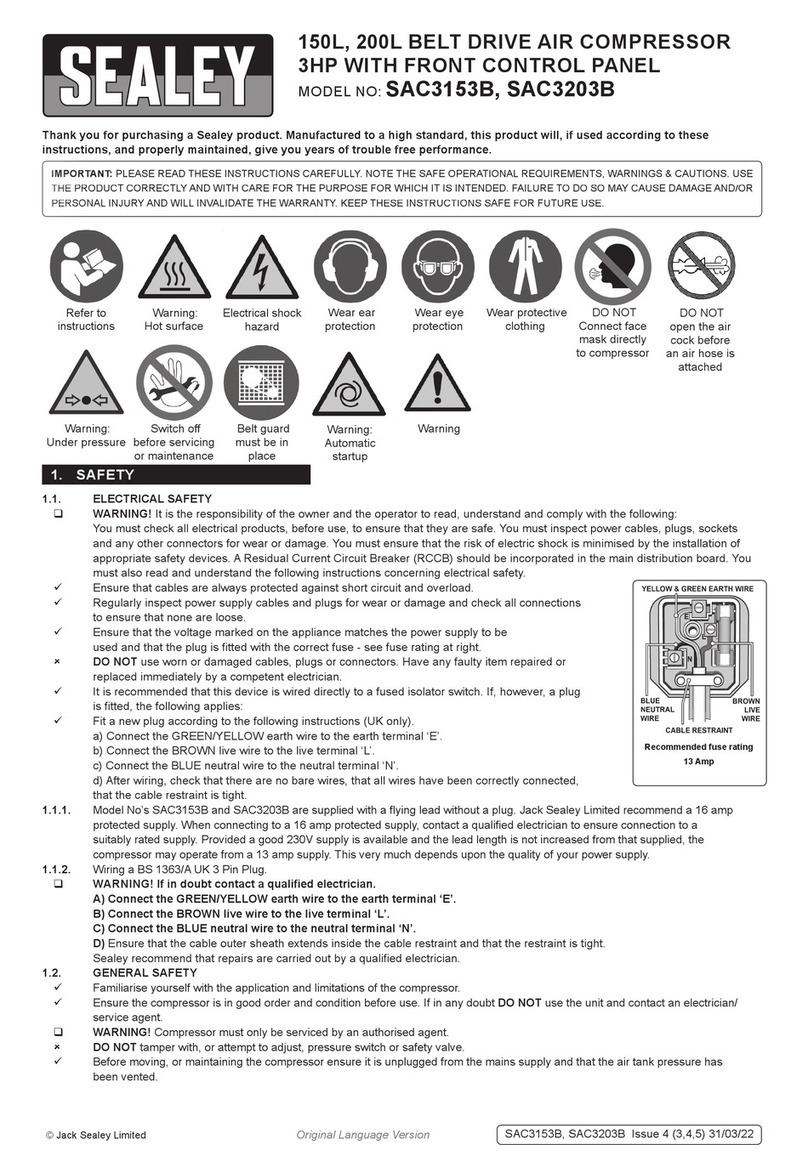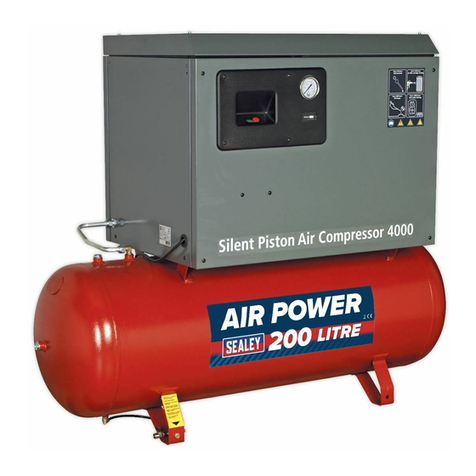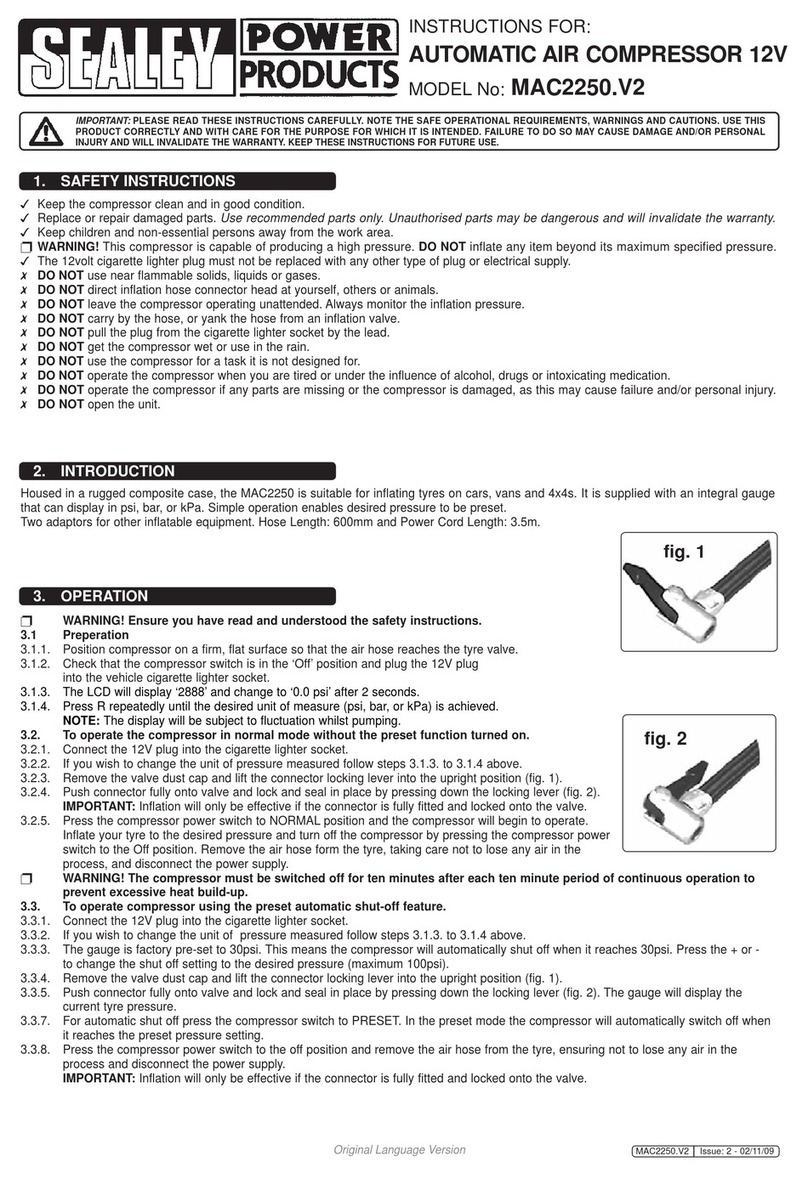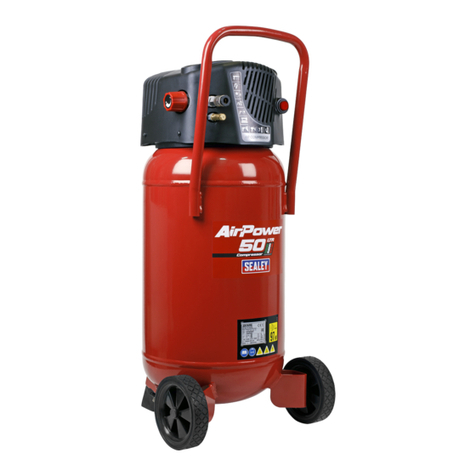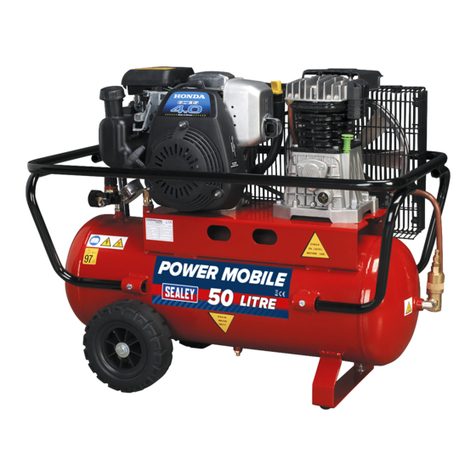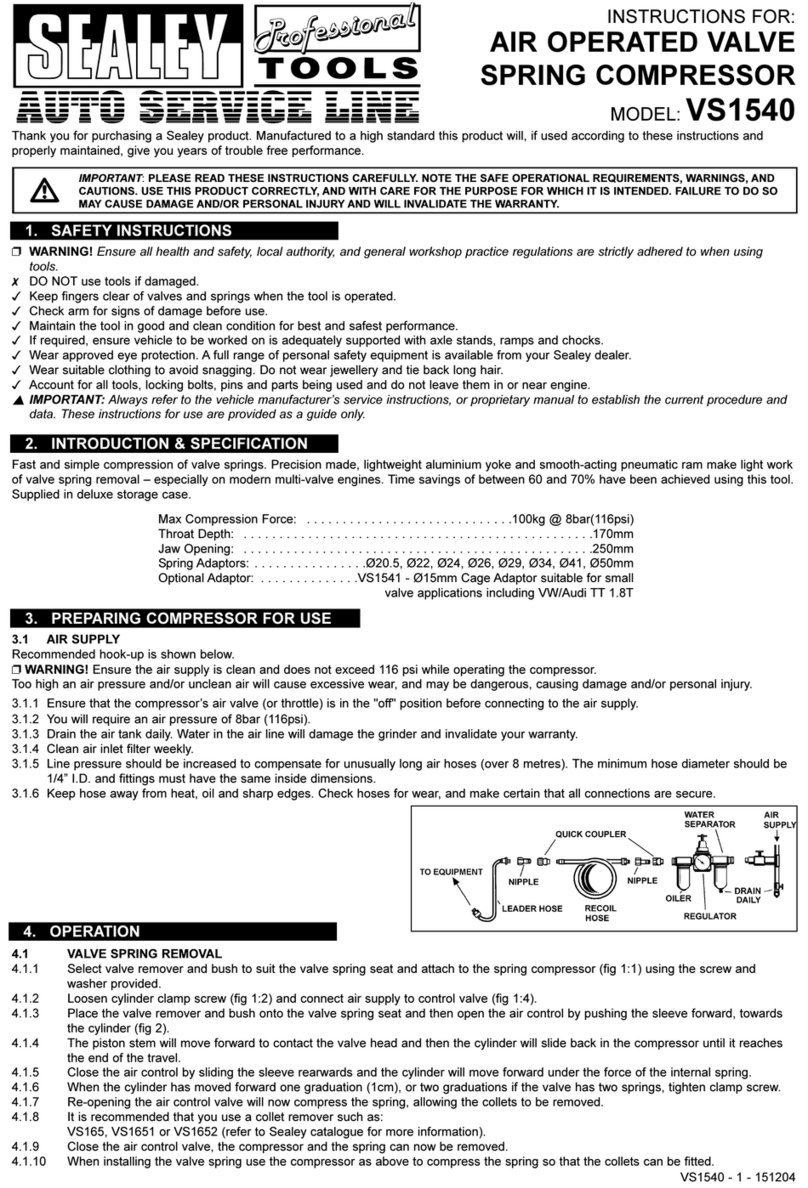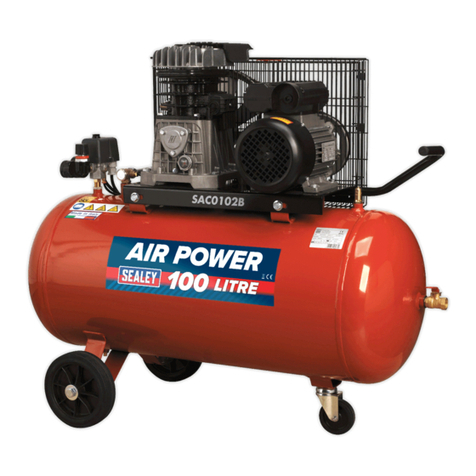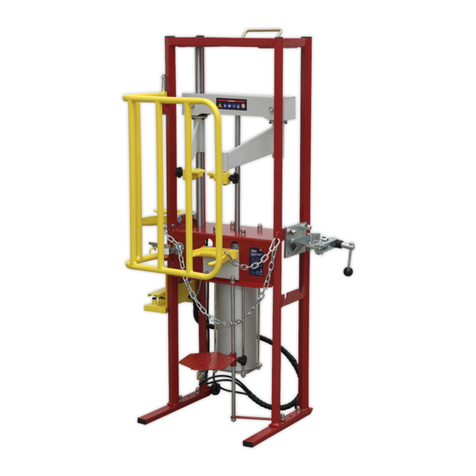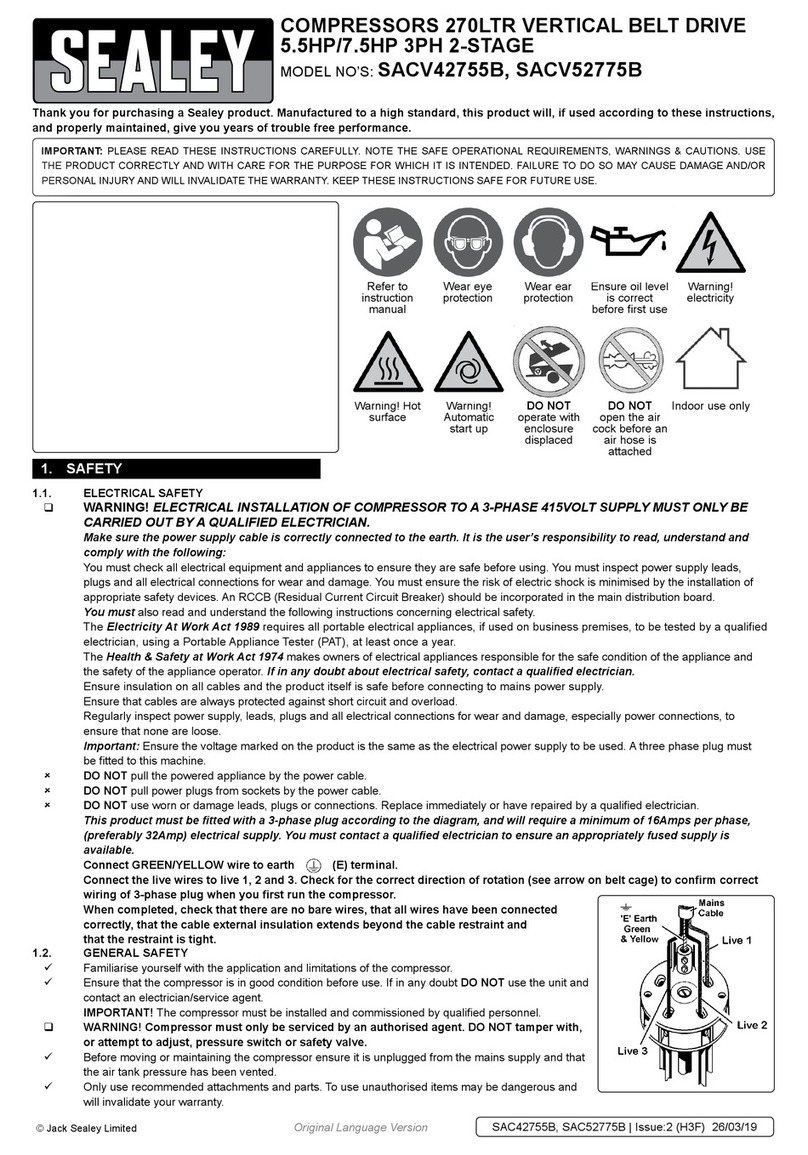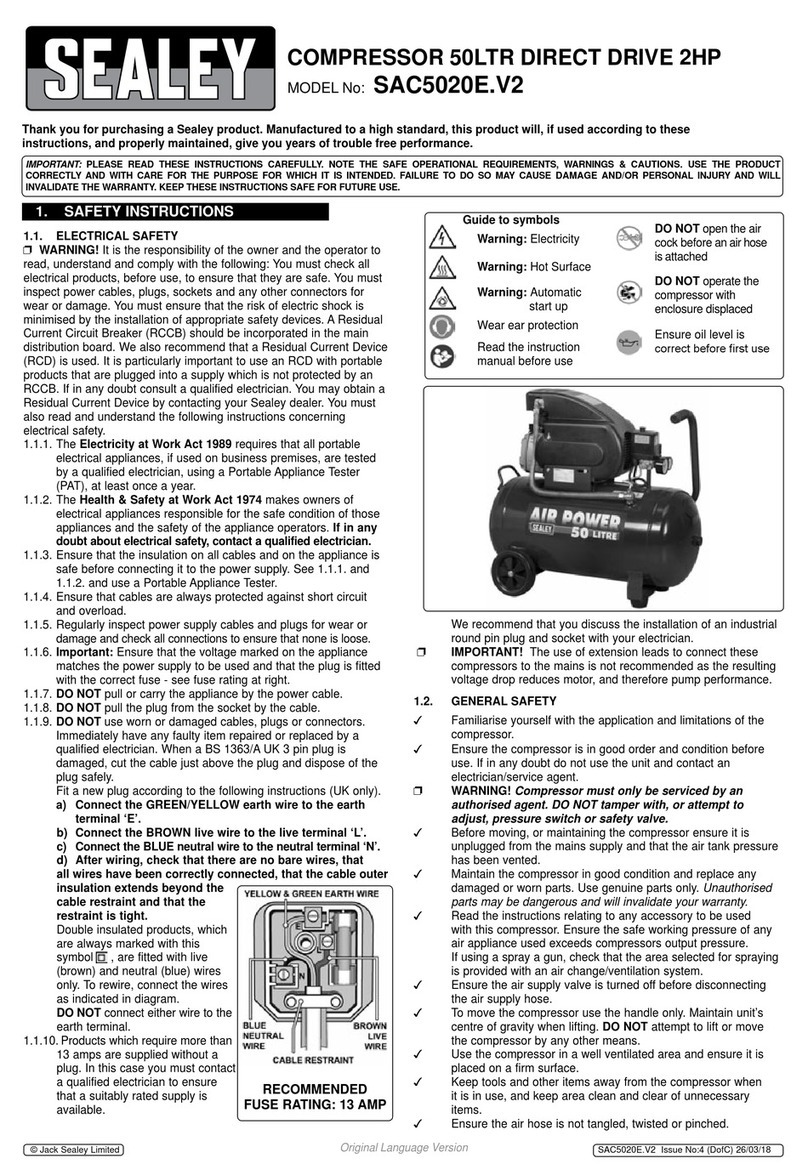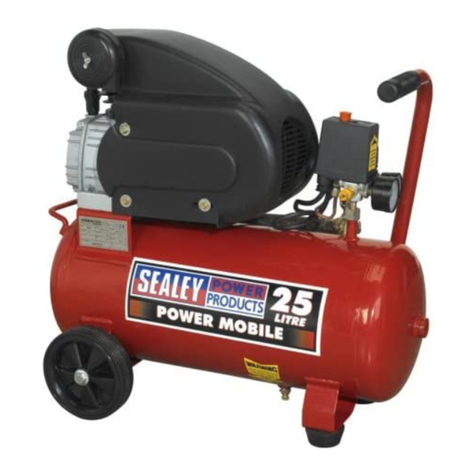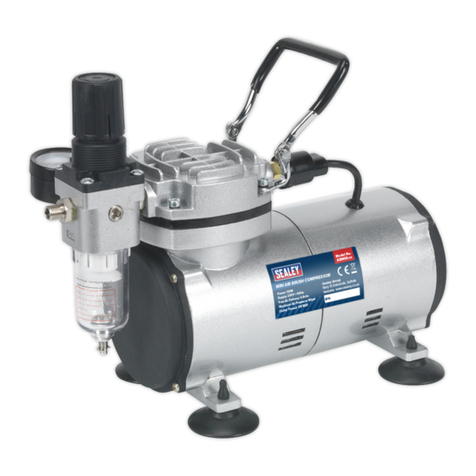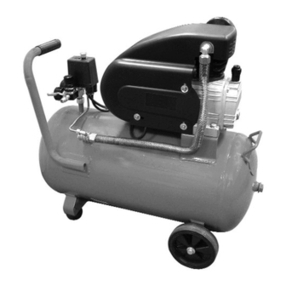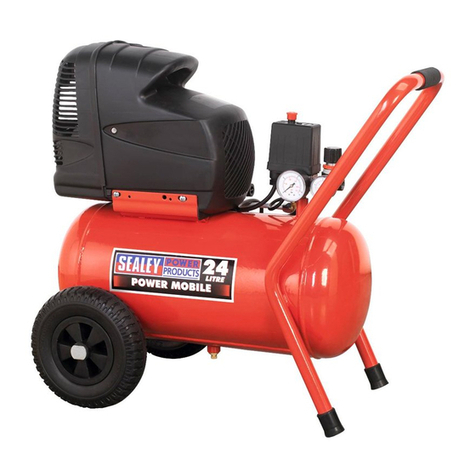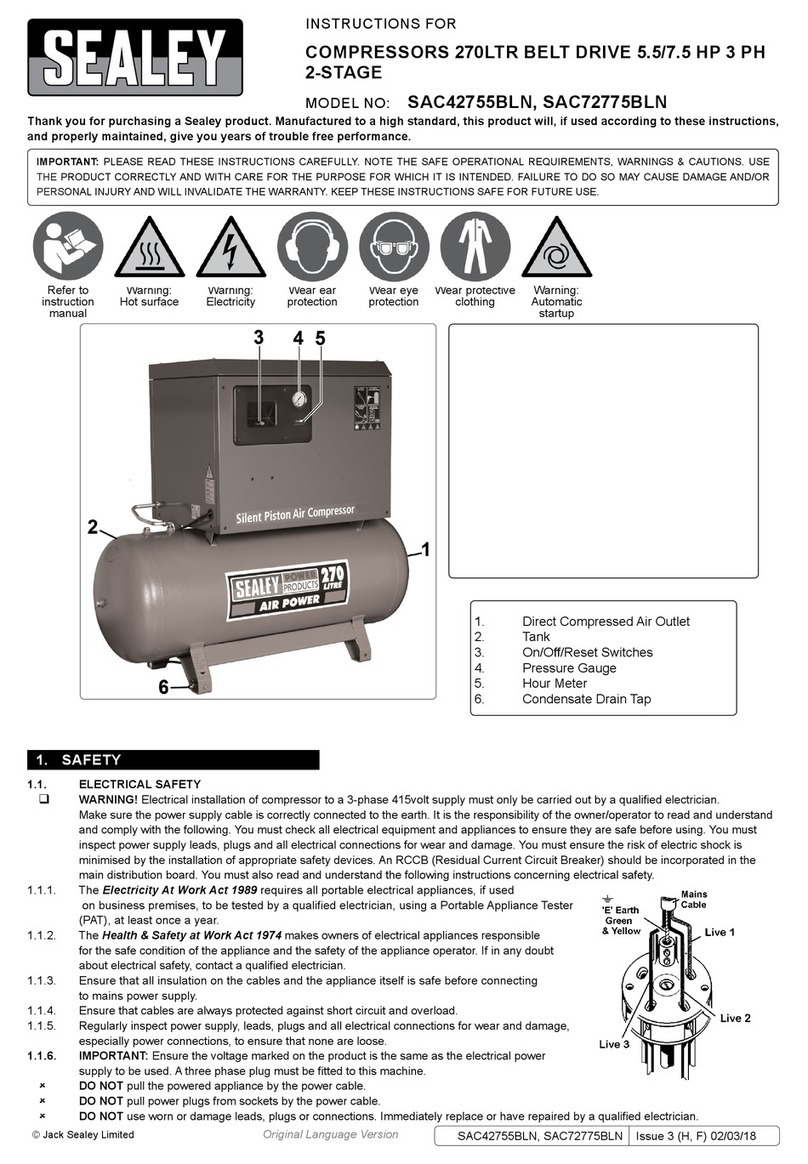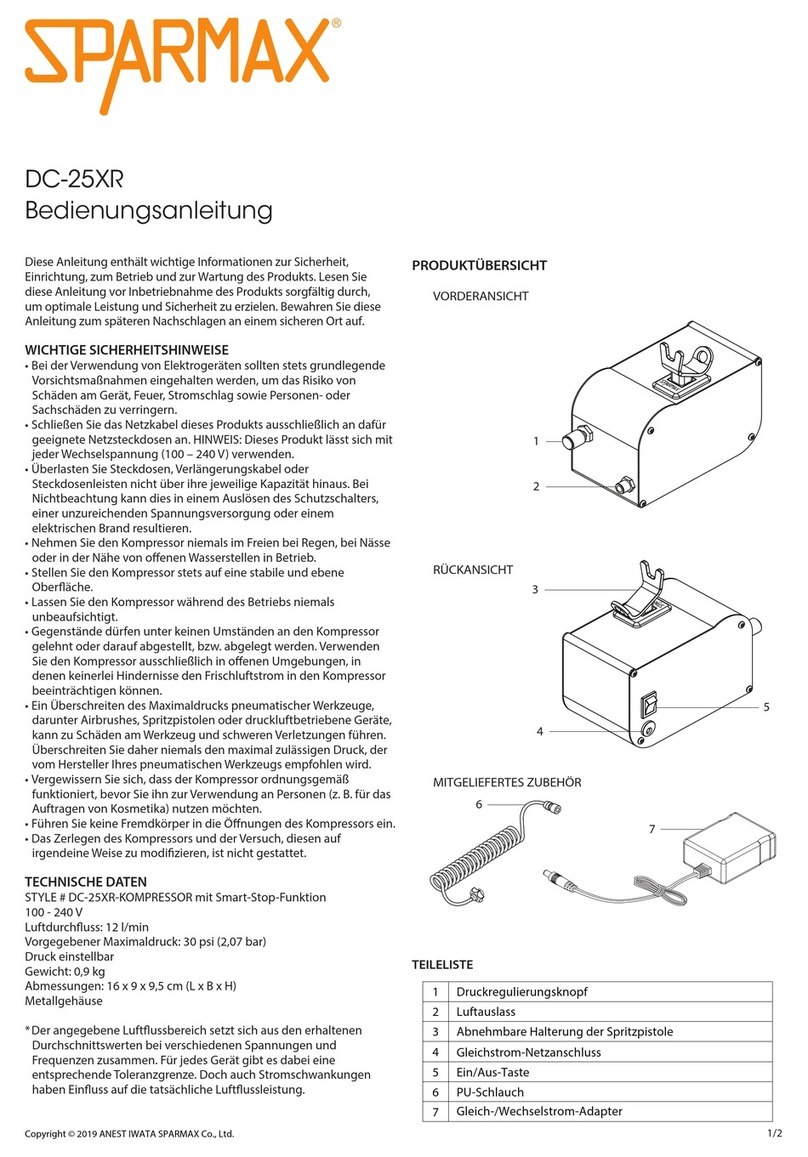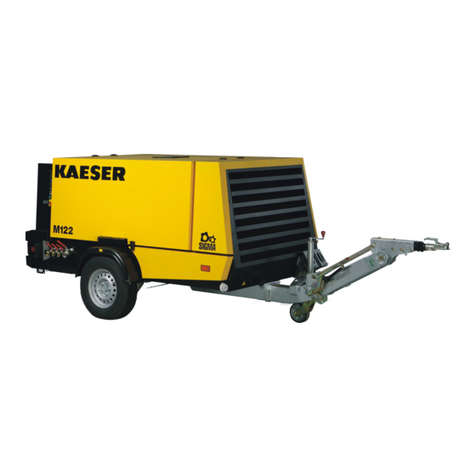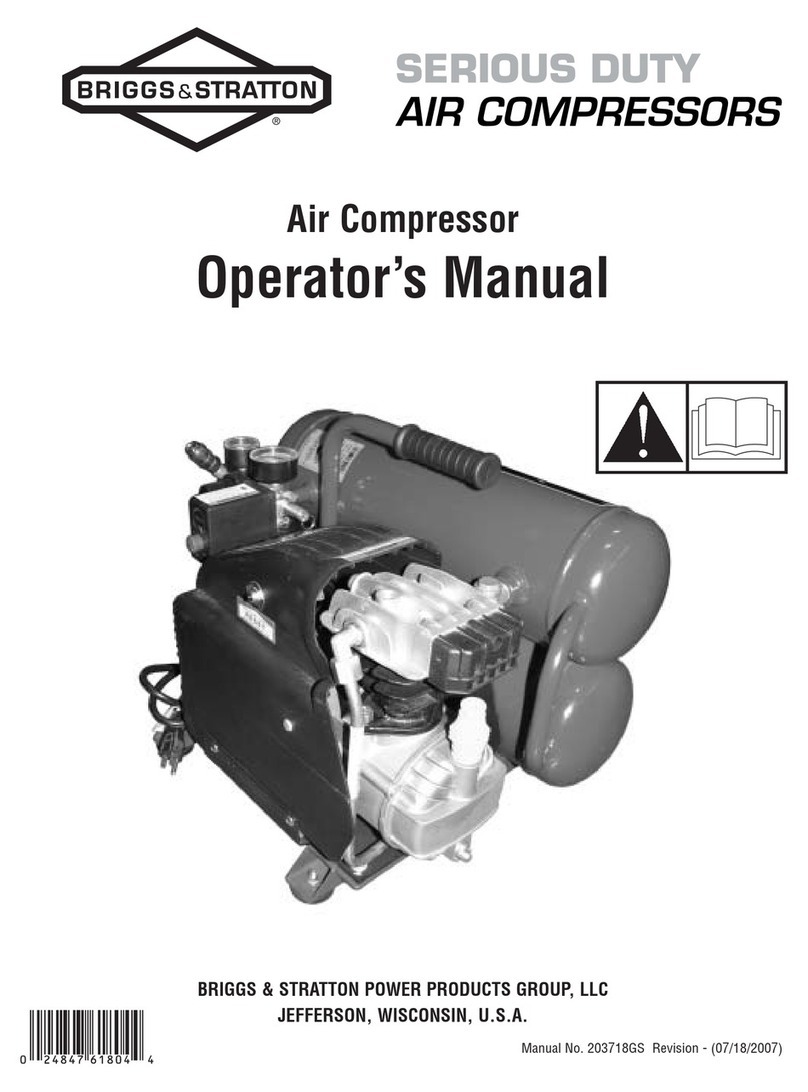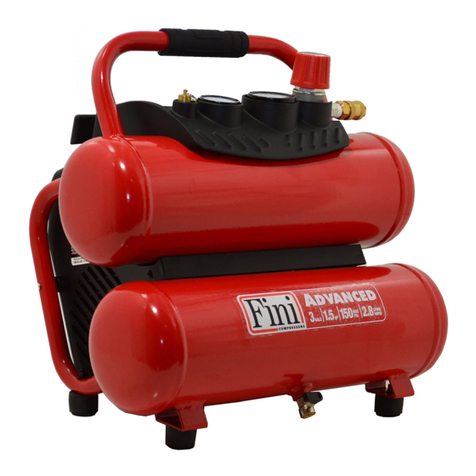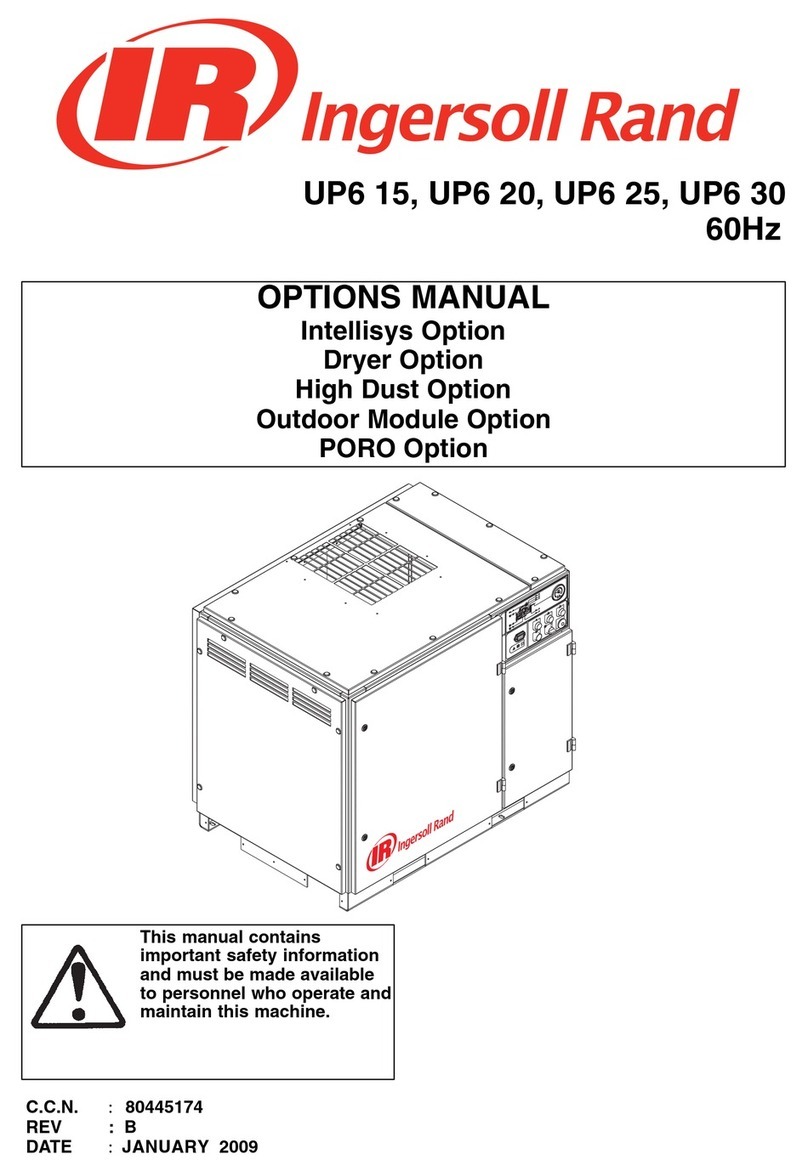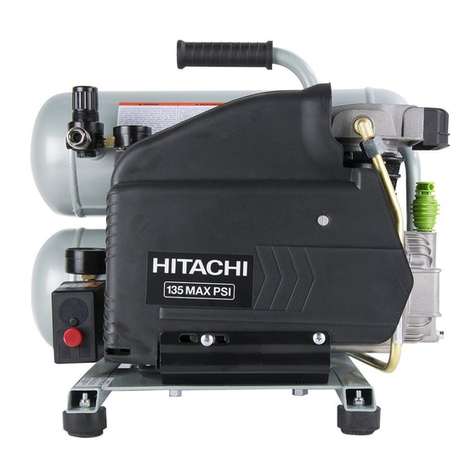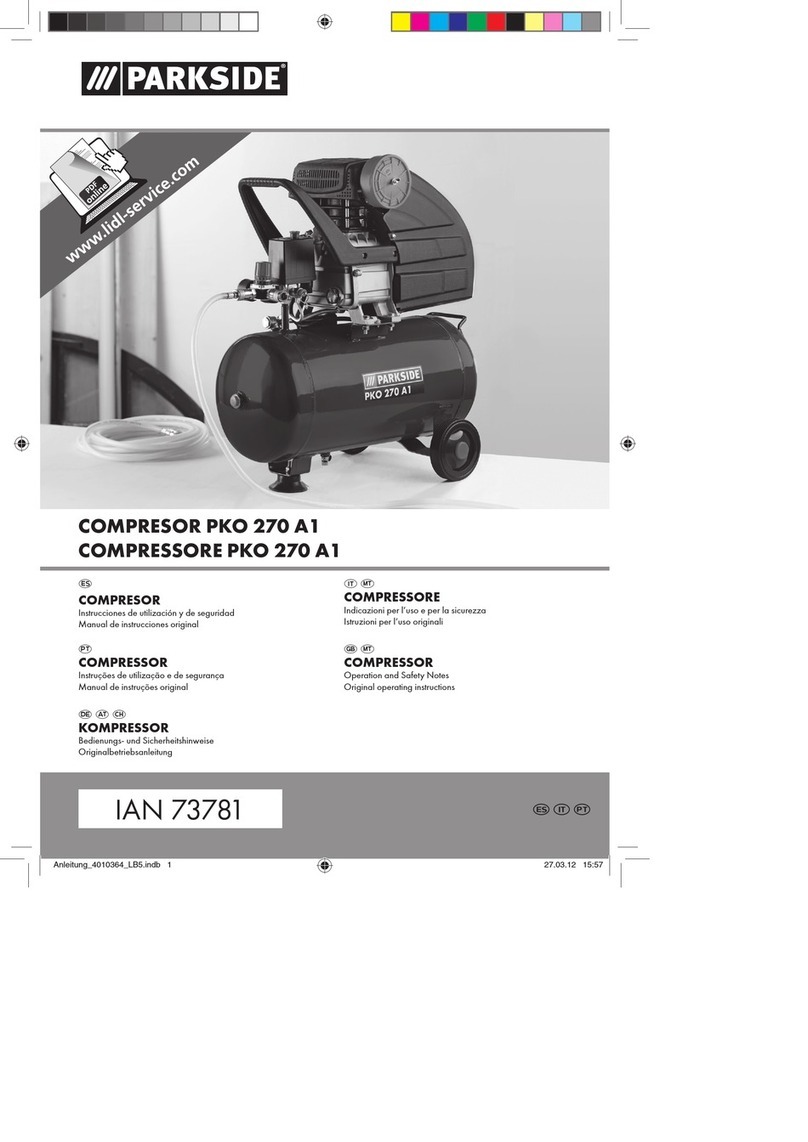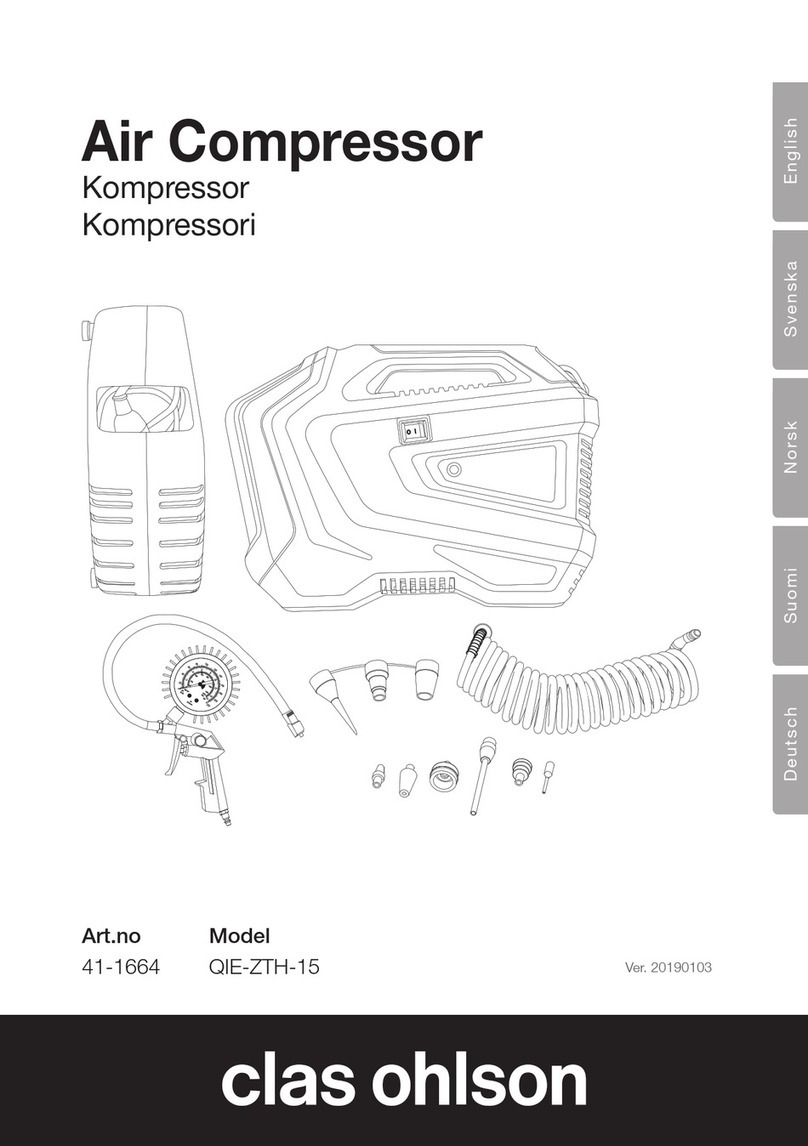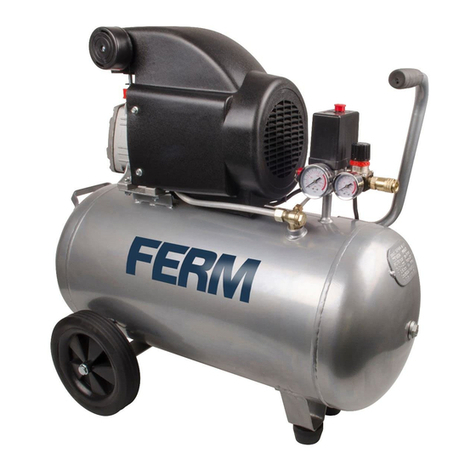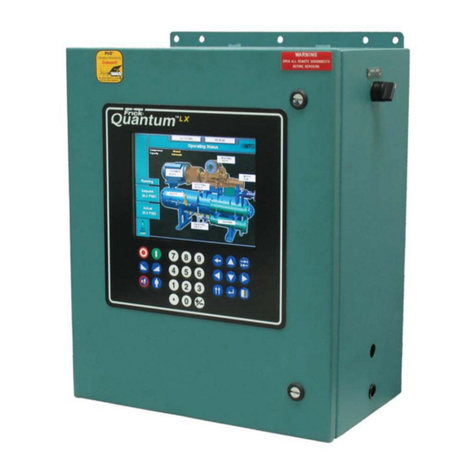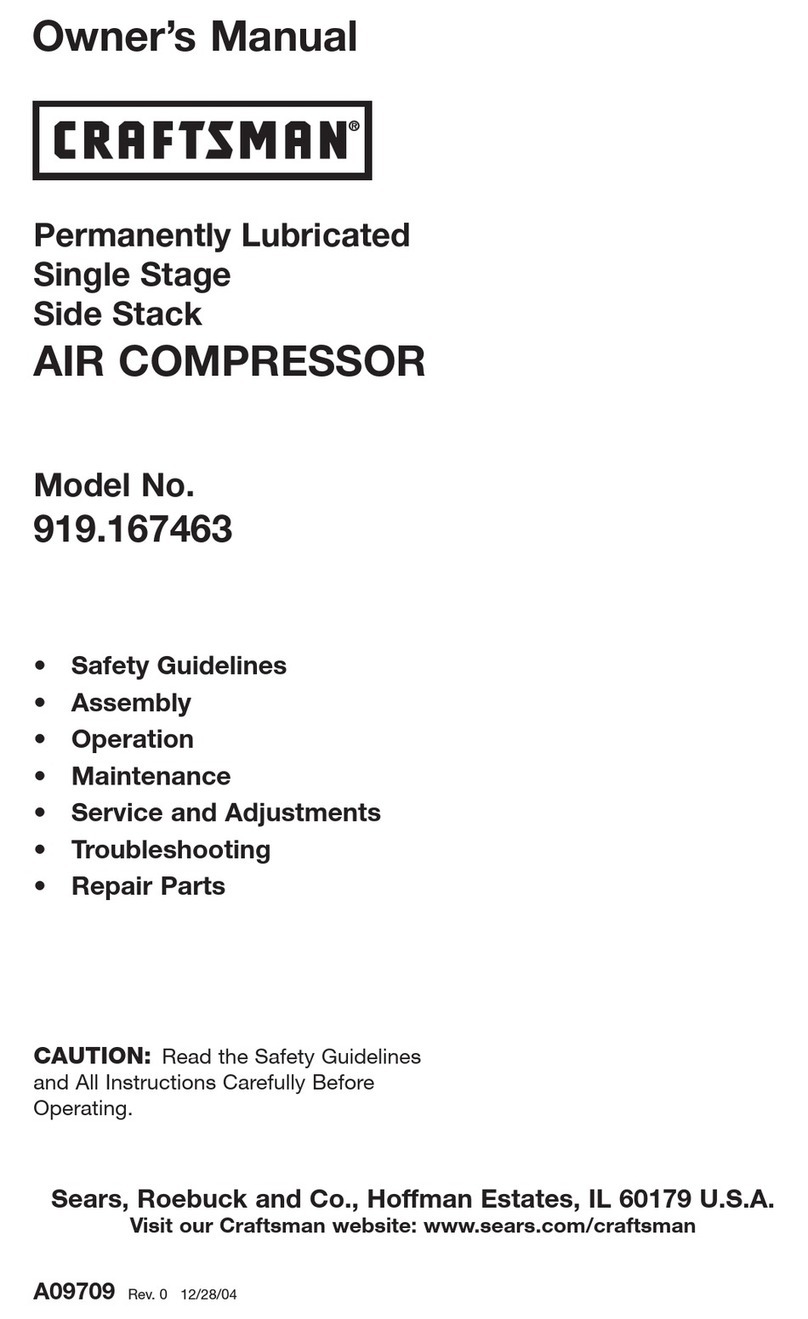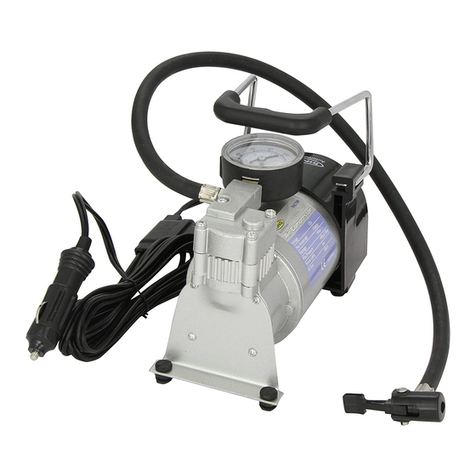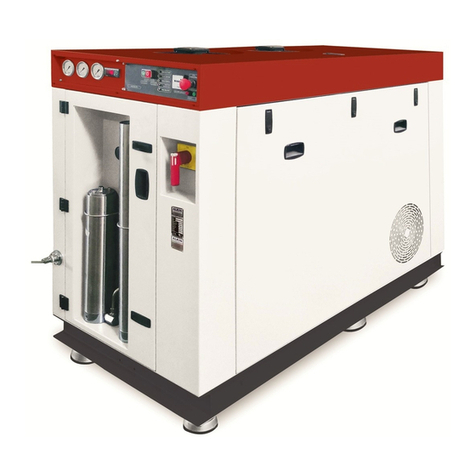
compressor stops automatically when the max. pressure value allowed - written
on the specification plate and shown on the gauge (fig.3.6) - is achieved. The
compressor will now operate automatically. The pressure switch (fig.3.8) stops
the motor when the maximum tank pressure is reached and restarts it when
pressure falls below the minimum threshold - approx. 2 bar (29psi) less than the
maximum pressure.
5.3.5. Stop the compressor by pushing the switch knob (See g.3.1) downwards.
The compressed air inside the compressor head will flow out, making the restart
easier and preventing the motor from being damaged. DO NOT, other than in an
emergency, stop the compressor by switching off the mains power, or by pulling
the plug out, as the pressure relief will not then occur and motor damage
may result upon restart.
When the compressor runs correctly and is stopped correctly there will be:
(a) a whistle of compressed air when the motor stops,
(b) a protracted whistle (about 20-25 seconds) when the compressor starts with
no pressure in the tank.
5.3.6. The output pressure is regulated by the pressure regulator (fig.3.2). Turn the
knob clockwise to increase pressure and clockwise to reduce it. The knob can
be locked at any required setting by tightening the locking ring (fig.3.3) up against
the underside of the knob. To determine the correct working pressure for any
piece of equipment check the corresponding manual. When the compressor
is not being used set the regulated pressure to zero so as to avoid damaging the
pressure reducer.
NOTE: a) If the motor does not cut in and out, but runs continuously when using
an air appliance, the capacity of the compressor may be too small for the equipment or tool.
b) The larger gauge (fig.3.6) indicates the pressure inside the main tank. The smaller gauge (fig.3.5) indicates the pressure supplied to
the air equipment. Should the pressure in the main tank exceed the pre-set switch (fig.3.8) maximum, the safety valve (fig.3.7)
will activate.
WARNING! For this reason DO NOT tamper with, or adjust, the switch or safety valve.
5.3.7. The compressor is fitted with a reset trip, located in the connection box on top of the motor (see fig.A.Z) The reset button is on the side
of the box. Should the trip activate, leave for 1 minute before pressing the button to reset. For possible causes of trip activation and
remedies see section 7 Troubleshooting.
6. MAINTENANCE
WARNING! Before performing any maintenance operation, switch off the
compressor, disconnect from electricity supply and release all air from the
tank. In order to keep the compressor in good working condition, periodical
maintenance is essential.
6.1. After the first 50 working hours replace the lubricating oil - see Item 6.3.
6.2. OPERATIONS TO BE CARRIED OUT DAILY:
6.2.1. Drain condensation, place a container under the valve and open the valve by
turning anti-clockwise (fig.5). Retighten the valve.
6.2.2. Check that all nuts and bolts are tight, particularly those retaining the
crankcase and cylinder head.
6.3. OPERATIONS TO BE CARRIED OUT EVERY 100 HOURS: (or more
frequently, if the compressor operates in a very dusty atmosphere).
6.3.1. Check oil level and, if necessary, top it up.
6.3.2. Remove the air filter element by unscrewing the filter holder (fig.4) and
prising open the holder. Clean it by blowing through with an air line at low pressure, from the clean side. Alternatively, wash it in soapy
water, rinse and dry. DO NOT operate the compressor without the filter as foreign bodies or dust could seriously damage the pump.
6.3.3. Check for oil leaks.
6.4. OPERATIONS TO BE CARRIED OUT EVERY 200 HOURS:
6.4.1. Replace the lubricating oil. Remove the oil filler/breather (fig.2A) and unscrew
the drain bolt (fig.2B), drain the oil into a suitable container. Drain when the
compressor is hot so that the oil drains rapidly and completely. Incline the compressor
to ensure complete drainage. Replace the drain bolt and refill with fresh oil through the
filler aperture. DO NOT overfill.
6.4.2. Replace oil filler/breather (fig.2A).
6.5. RECOMMENDED OIL:
6.5.1. Suitable for room temperatures ranging from +5ºC to +25ºC: SEALEY CPO or
equivalent SAE 40 compressor oil.
6.5.2. Room temperature below +5ºC: SAE 20 compressor oil.
WARNING! Never mix different oils and DO NOT use non-detergent/low quality
oils as the compressor may be damaged.
6.5.3. Dispose of waste oil only in accordance with local authority requirements.
6.5.4. Check the automatic cut-out at maximum pressure and the automatic cut-in at
2 bar below that.
6.6. OPERATIONS TO BE CARRIED OUT EVERY 500 HOURS:
6.6.1. Replace air filter (fig.4).
6.6.2. Check all tube fittings and electrical connections.
IMPORTANT! Failure to carry out maintenance tasks may invalidate the warranty on your compressor.
WARNING - Air contaminants taken into the compressor will aect optimum performance. Example: Body ller dust or paint overspray
will clog the pump intake lter and may cause internal damage to pump/motor components.
NOTE: Any parts damaged by any type of contamination will not be covered by warranty.
g.3
g.4
g.5
SAC5030VE.V3 Issue 1 24/01/19
Original Language Version
© Jack Sealey Limited
